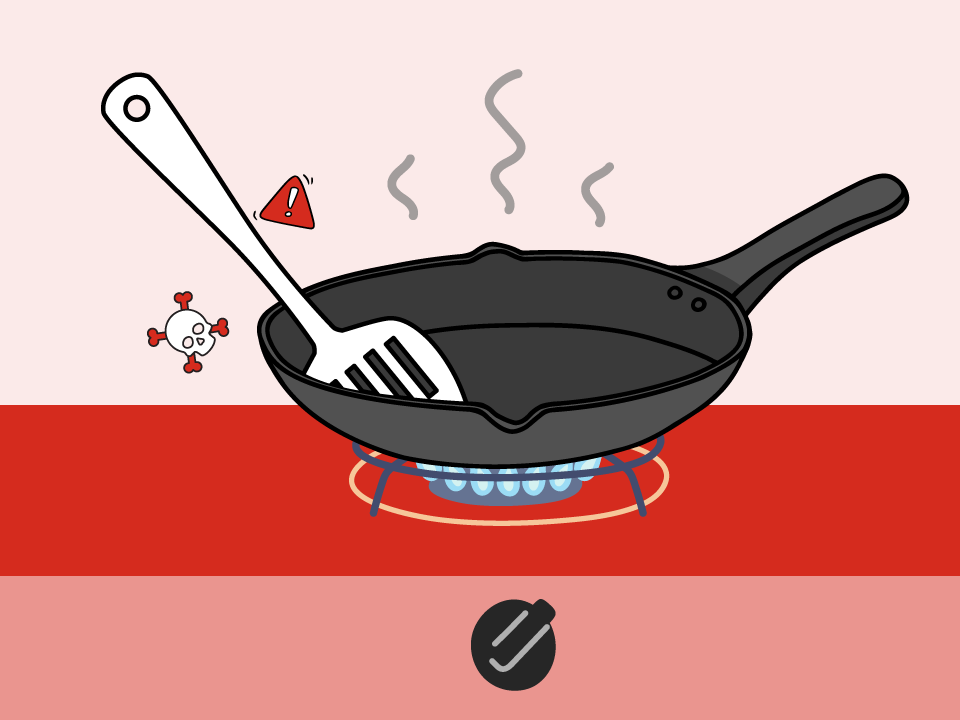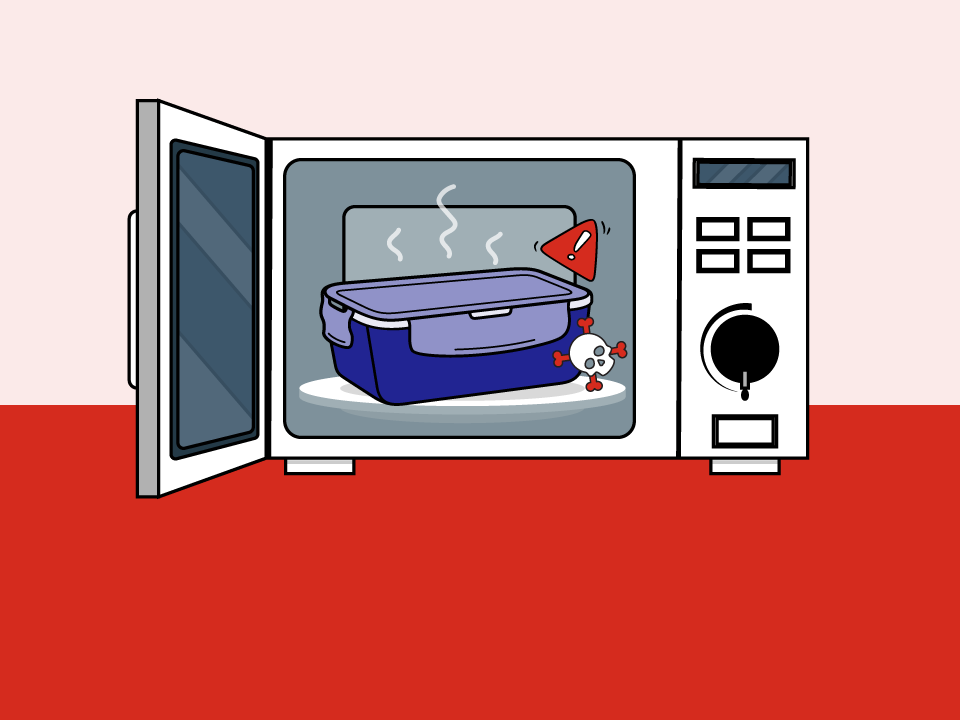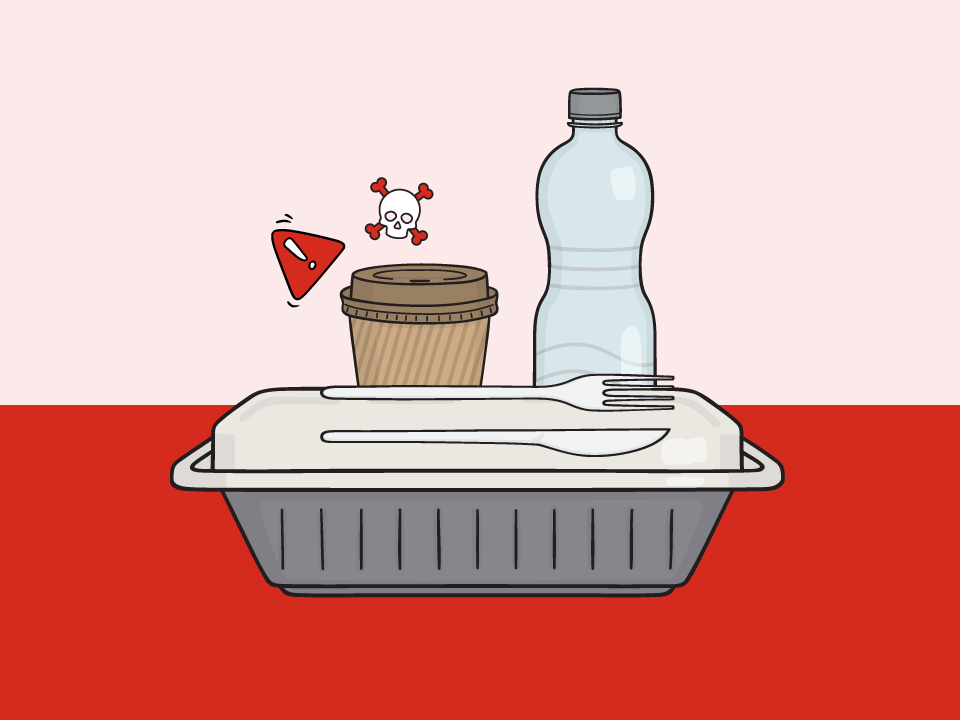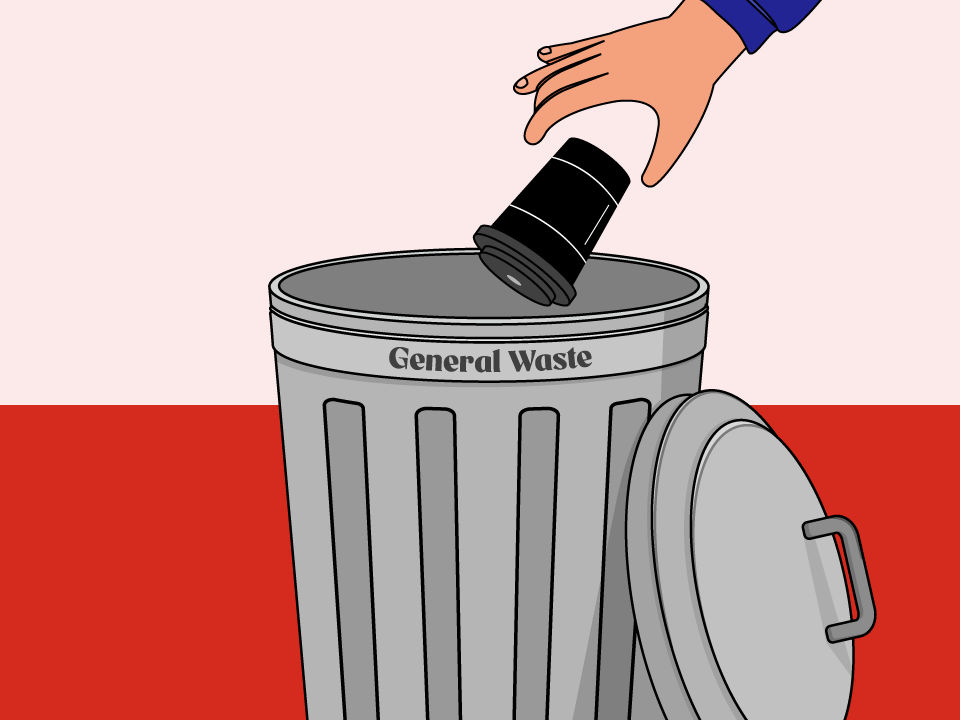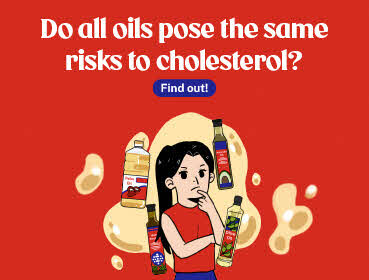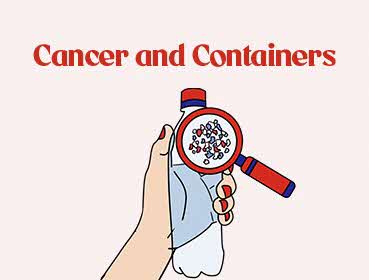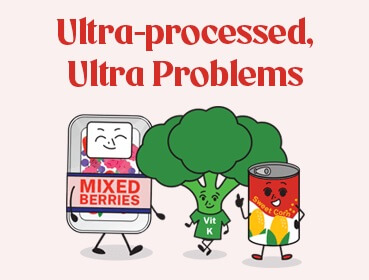Black plastic? That’s toxic
Black plastic utensils and containers can be harmful to your health and the environment. Here’s why
From spoons to spatulas to single-use food containers, black plastic products are everywhere, but are they safe to use regularly? Let’s unpack the threat of black plastic products to the human body and the environment at large.
The toxic truth about black plastic
Discover what makes these products hazardous and steps you can take to minimise your exposure.
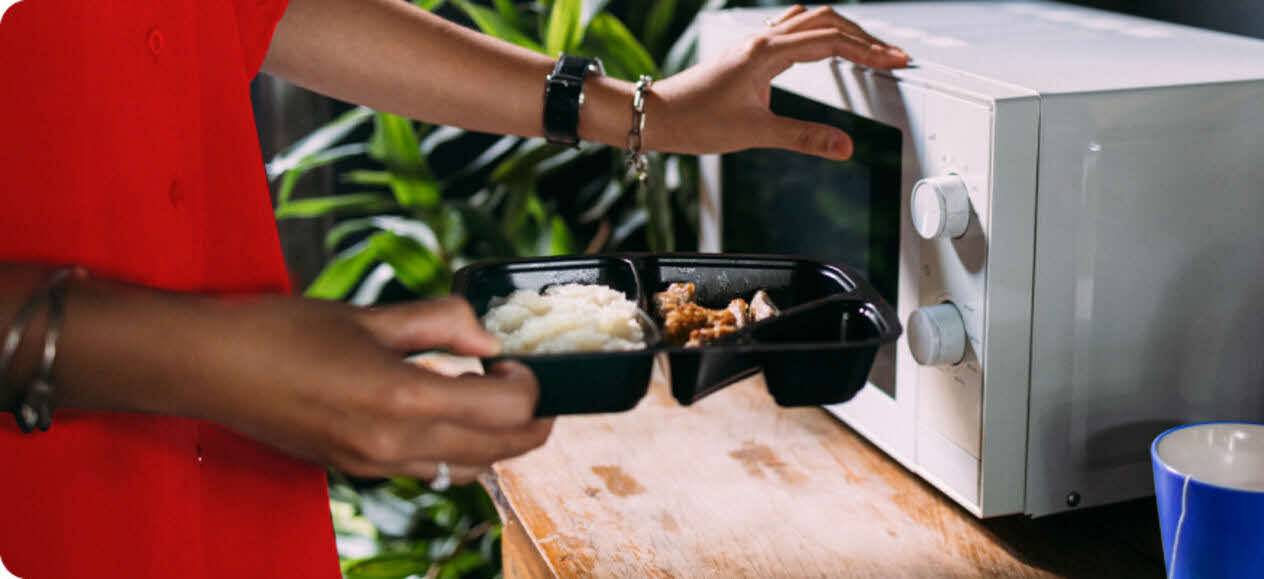
Plastics, the silent enemy
“Is black plastic really dangerous?” you might find yourself wondering.
Today, this sleek black variant of the ordinary plastic packaging can be found on the lid of the cup holding your coffee, takeaway containers from food courts, or plastic utensils that come with your meal delivery. Despite their harmless appearance, these products do contain toxic chemicals. The key culprit? A little-known chemical called bromine1.
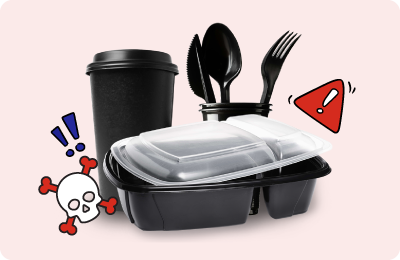
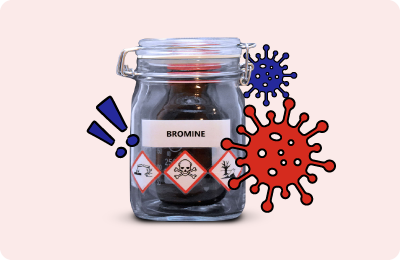
What is bromine?
It’s an element used to make brominated flame retardants (BFRs). A particularly hazardous type called decaBDE has been linked to cancer and brain development issues1.
A recent study has found the presence of bromine in about 88% of black plastic products, including kitchen utensils and household items, while decaBDE was found in about three-quarters of the tested products1.
How did it end up in products we use to eat and drink?
The answer to this mystery can be traced to facilities where plastic products are processed. Here’s how it happened.
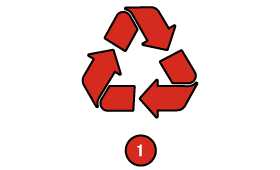
Plastic products are sent to reclamation plants to be recycled.

However, the sorting technology in these facilities is unable to recognise and sort black plastic properly.

Facing the lack of recycled black plastics, some manufacturers ofeveryday products resort to using recycled electronics, many of which contain chemicals like lead, mercury, and BFRs2.
Quick verdict: Is it a credible threat?
The initial finding on black plastic toxicity was first published on the journal Chemosphere. Key figures cited on this study have since been corrected due to a calculation error that overestimates the closeness between the exposure level to flame retardants caused by black plastic and the safe exposure limit prescribed by the Environmental Protection Agency in the US3.
Despite this error, the study’s key point remains valid: black plastic products contain materials from toxic e-waste and plastic products in general harbour synthetic chemicals that could affect your health3.
How black plastic can make you sick
Flame retardants and other synthetic chemicals can leach from black plastic containers and enter the human body, causing adverse effects. More than 16,000 chemicals are used in the manufacturing of plastics, and over 1,000 are considered Endocrine-Disrupting Chemicals (EDCs) that could interfere with the hormones in your body.

Heightens cancer risks
Study participants with the highest level of PBDEs (a form of flame retardant) had a 300% greater chance of cancer deaths4.

Impairs brain development
Exposure to harmful plastic chemicals is linked to reduced IQ6 and attention spans7 in children.

Damages critical organs
Even in small doses, these chemicals can disrupt the brain, kidneys, and reproductive functions5.

Disrupts hormone processes
Chemicals in plastic products have been linked to endocrine disruption and thyroid problems6.
Be smart about your plastic usage
Here’s a few things you can do to minimise your exposure to harmful plastics and their impact on the environment.
Food-grade silicone vs black plastic
Worried about the rubbery spatula or utensils on your kitchen drawer? Here’s the good news – silicon rubber and black plastic are not the same.
Food-grade silicon products have been tested and certified by the Food and Drug Administration in the United States to be safe for contact with food8.
Made from a synthetic polymer, silicone is heat-resistant, freezer-safe, and oven-safe but only up to approximately 428° F or 220° C8. Silicone also
ranks low in eco-friendliness as it is not biodegradable9. So in a head-to-head comparison, you are better off sticking to bamboo or metal utensils!
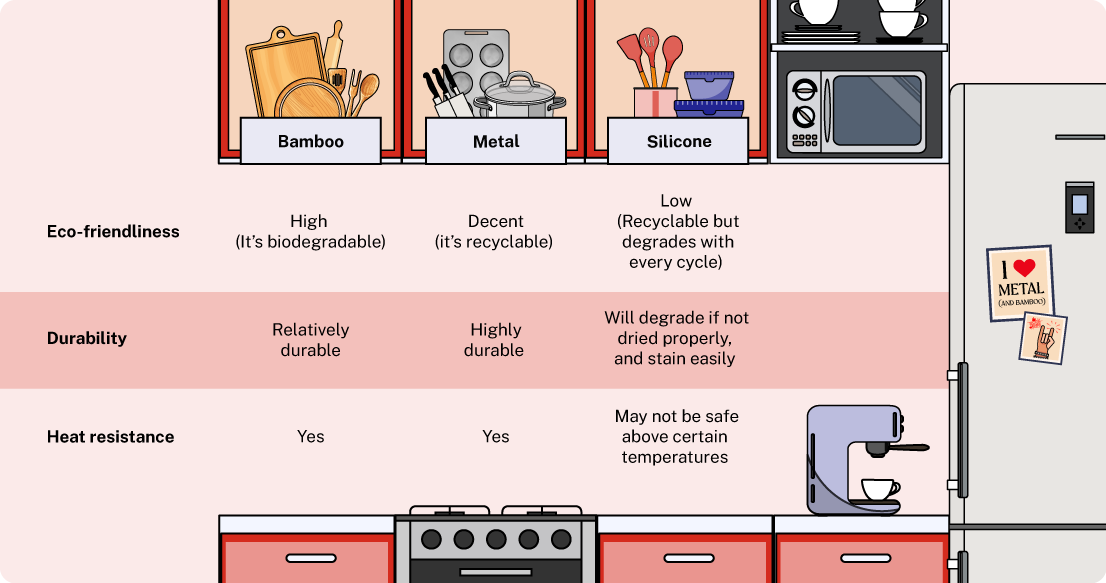
From eating utensils to everyday electronics, kitchen tools, children’s toys, beauty products, and clothing items, plastic products are inseparable from
our daily consumption habits. In Singapore, plastics rank as the fourth highest type of waste, with one million tonnes of plastic waste generated in
2022. More concerningly, a study has also identified Singapore as one of the world’s major consumers of single-use plastic10.
What can you do to minimise your exposure to toxic chemicals contained in these products? Other than the tips we have shared in this article (such as
keeping your plastic utensils from intense heat and using personal non-plastic cutleries when dining out), regular health check-ups will help you catch
any potential red flags associated with toxic chemical build-ups.
To protect your personal health and finances against illnesses caused by chemical pollutants, consider purchasing a health insurance plan that covers
against major critical illnesses such as heart disease, cancer, and neurological diseases.
Keep tabs on the latest insights and facts on living healthy with Lifepedia, our all-in-one source on health and financial planning!
Sources:
- https://www.foodnetwork.com/healthyeats/news/throw-away-black-takeout-container-kitchen-utensils
- https://www.beyondplastics.org/fact-sheets/black-plastic
- https://www.health.com/toxic-black-plastic-study-error-8764244
- https://edition.cnn.com/2024/04/01/health/flame-retardant-pbdes-cancer-wellness/index.html
- https://www.beyondplastics.org/fact-sheets/black-plastic
- https://www.scientificamerican.com/article/how-do-chemicals-in-plastics-impact-your-endocrine-system
- https://www.washingtonpost.com/climate-environment/2024/10/05/have-black-plastic-your-home-it-could-expose-you-toxic-chemicals-researchers-say
- https://www.chemicalsafetyfacts.org/health-and-safety/cooking-with-silicones
- https://www.zerowaste.com/blog/silicone-vs-plastic-whats-best
- https://www.channelnewsasia.com/today/big-read/big-read-reduce-single-use-plastics-disposables-companies-greenwashing-4297071
Let us match you with a qualified financial representative
Our financial representative will answer any questions you may have about our products and planning.




